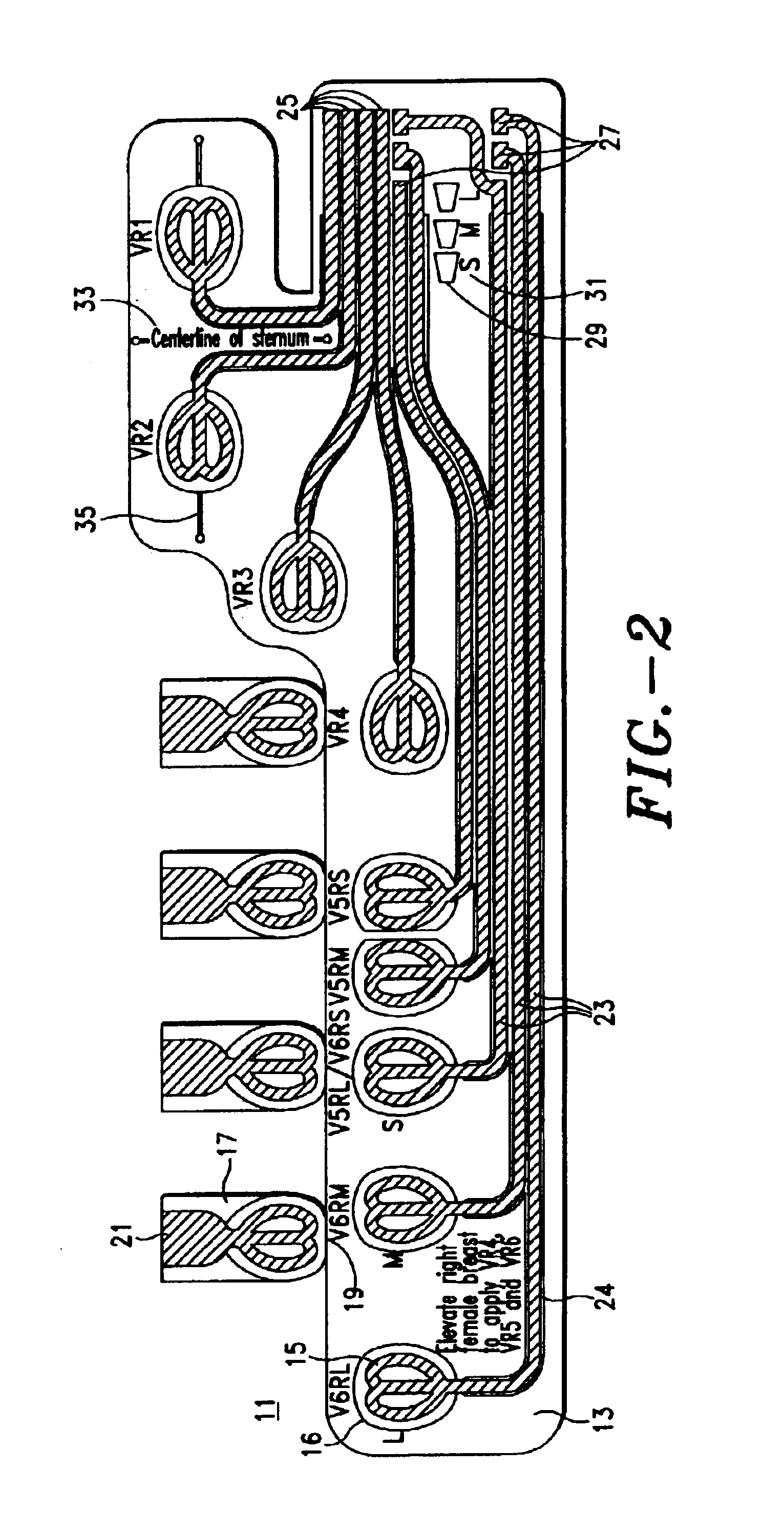Right side universal electrocardiogram sensor positioning mask and method
a technology of universal electrocardiogram and positioning mask, which is applied in the field of dermal chest masks, can solve the problems of high cost, time-consuming, and difficult accuracy of lead placement and attachment, and achieve the effects of less time, simplified sales and distribution, and high volume production
- Summary
- Abstract
- Description
- Claims
- Application Information
AI Technical Summary
Benefits of technology
Problems solved by technology
Method used
Image
Examples
Embodiment Construction
[0044]Reference is made to the drawings for a description of the preferred embodiment of the present invention wherein like reference numbers represent like elements on corresponding views.
[0045]FIG. 1 illustrates a plan view of the universal disposable ECG sensor positioning mask of the present invention for three sizes of human torso for placement on the left chest of a patient for performing an ECG test. FIG. 2 illustrates a plan view of the opposite side of the universal disposable ECG sensor positioning mask of FIG. 1 for placement on the right chest of a patient for performing a right chest ECG test. FIG. 3 illustrates a plan view of the universal disposable ECG sensor positioning mask of the present invention for four sizes of human torso including extra large for placement on the left chest of a patient for performing an ECG test. FIG. 4 illustrates a plan view of the opposite side of the universal disposable ECG sensor positioning mask of FIG. 3 for placement on the right c...
PUM
 Login to View More
Login to View More Abstract
Description
Claims
Application Information
 Login to View More
Login to View More - R&D
- Intellectual Property
- Life Sciences
- Materials
- Tech Scout
- Unparalleled Data Quality
- Higher Quality Content
- 60% Fewer Hallucinations
Browse by: Latest US Patents, China's latest patents, Technical Efficacy Thesaurus, Application Domain, Technology Topic, Popular Technical Reports.
© 2025 PatSnap. All rights reserved.Legal|Privacy policy|Modern Slavery Act Transparency Statement|Sitemap|About US| Contact US: help@patsnap.com



